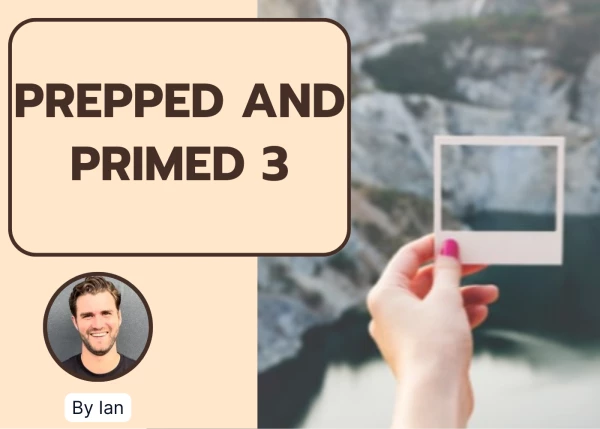In one of my interviews, I need to make a client presentation from various data sources. I have 30 minutes to prepare and 30 minutes to present. How do I maximise my time. What are interviewers looking for? Can I get away with focusing on just one recommendation? Any tips will be appreciated. Also, how can I practice for this kind of an interview?
Panel interview approach


Hi there,
Everything you have learned in classic casing applies here. This means:
1) Be very clear on the objective
2) Form several hypothesis
3) Figure out which informations matters - ruthlessly eliminate any data/charts that don't matter. What matters = what presents the strongest argument to support your hypothesis
4) Wireframe/storyline your presentation first - Before you start making your presentation, what ar ethe headers? What is the flow? What data will you use?
If you want to practice for this, feel free to reach out to me. I can provide you with a simulation whereby I provide you with a prompt and few dozen charts/exhibits, we timebox your response, and then we evaluate + talk through what you could have done better.
Good luck!

Hi there,
Interviewers look at several things in a panel interview with a presentation. Just to name a few, you should demonstrate to have the ability to:
- Identify quickly critical information
- Define a structure to present information
- Present the information in a convincing way
- React to challenging questions
The key areas you may want to cover to prepare are the following.
1. Learn how to define a plan of action and stick to that
The first thing you should do in a written case is to define a plan and allocate in the best possible way your time.
Assuming 30 minutes for the analysis, a good approach would include:
- initial quick reading – 10 min (this may depend on the amount of material)
- structure the approach – 2-3 min
- make slides/answer to the questions adding detailed analysis and math – 15 min
- final review – 2-4 min
You should practice to stick to the time allocated to maximize your final performance.
2. Practice graph interpretation
You will probably have to analyse graphs as part of the data provided. The best way to practice is to take graphs from online sources and use a timer to test in how much time you can understand the key message. McKinsey PST graphs are good practice for that.
3. Work on quick reading and quick understanding of key information
You won’t have time to read and prioritize everything, therefore you have to understand where to focus. The ideal way to practice is to use long cases such as HBS ones. You should then learn to absorb the key information of the case. Quick reading techniques could also help.
4. Practice quick math
You will probably have some math to do as part of the data analysis. GMAT and McKinsey PST math should work well to prepare on this.
5. Learn how to communicate your slides/answers
When you have to present your findings in the second part, I would suggest the same structure used for a conclusion in a live interview, that is:
- Summarize the main questions you have to answer
- Present your proposed answer and detail the motivation behind
- Propose next steps for the areas you have not covered
As you will not be able to double-check hypotheses with the interviewer while you prepare the presentation, you should clearly state when you are making hypotheses and that you will have to verify them with further analysis.
When you have to prepare slides I would also recommend to work on:
A) structure the order of the slides
Normally the structure for a 5-slide presentation is the following:
- First slide summarizes the question and provides the answer
- Second, third and fourth slide have the supporting arguments for the first slide
- Fifth slide has the next steps
B) structure the content of each slide
There are three basic components for slides:
- Title
- Chart or data
- Label for chart
Many people structure the title as the mere description of what the chart is about.
A great title instead shows the implication of the graph as well.
Example: say the graph is showing a cost structure for a division.
- A bad title would be: Cost structure from 2005 to 2015.
- A good title would be: Cost structure of Division XYZ is not sustainable”.
- A great title would be Cost structure of Division XYZ is not sustainable due to ABC, assuming you have insides on the cause.
The rule of thumb for the title is that if you read all the titles of the slides together you should get a clear idea of what is going on.
C) present the slides
When you present, I would suggest the following steps for each slide:
- Introduce the slide: “Let’s move to slide 2, which will show us why we have an issue with this division”
- Present the main message of the slide: “As you can see, we have a cost structure which makes unfeasible to be competitive in this market”
- Provide details: “The graph, indeed, shows how our fix cost is XYZ, while competitors can benefit from economies of scale. Indeed…”
In terms of how to prepare, I do a session exactly on that.
Before the session, I can send you the data source to work on. We can then simulate the panel during the class, reviewing step-by-step all the improvements needed.
Please feel free to send me a message in case you have any questions.
Best,
Francesco



Hi Anonymous,
Concerning the number of recommendations: it fully depends on the data and your conclusions. Per se there is no right or wrong in 1 or several recommendations - the key point is that the data needs to support it.
Tactically speaking, in most cases there is usually 1 'likely' recommendation by design - which tests if a candidate can make the correct conclusions based on the data available.
Hope that helps - if so, please be so kind to give it a thumbs-up with the green upvote button below!
Robert

Hello!
Don´t let yourself be intimidated: everything you learned in normal cases applies equally here.
This is very similar to written cases, you can look in the Q&A since there are countless posts there with tips, examples, etc.
Hope it helps!
Cheers,
Clara












